The Heidelberg Spectralis OCT has been at the forefront in OCT technology development for some years now and readers with access to the machine will no doubt know that the operating platform is a continually evolving beast, allowing improved operation, image quality and data analysis options. The new OCT2 module was launched at the start of the year in the UK and offers some immediate benefits while readying the Spectralis for some major developments soon to appear. As it has been a couple of years since I last had access to the Spectralis in a clinic, I was keen to try out the OCT2 module on a couple of patients for whom OCT assessment is important (1).
OCT2
The immediate advantage of the OCT2 upgrade is the faster scanning speed. Incorporating an A-scan rate of 85kHz, the OCT2 provides a quicker acquisition speed (helpful to both practitioner and patient, of course) while also improving image quality (2 shows a single scan revealing vitreous detachment) even through cataract (3), and allowing better visualisation of the ganglion cell complex (4). Combined with the wide field scan capability of the Spectralis (5), much more clinical detail is immediately available (such as for the tractional detachment in 6). Layer analysis is easier to visualise (7), while the integral AutoRescan function and TruTrack Active Eye Tracking software allow better acquisition for less stable fixaters and, importantly, offer accurate monitoring over time (8, 9). The continuation of the same SD-OCT technology, the same incident wavelength and the same normative database means patient data initially captured with earlier Spectralis models are able to be assessed with OCT2 without a break. Those of you thinking of upgrading should be reassured by this. The model I used still offered the MultiColor option (10 is my retina – note the shadows of my vitreous changes) and anterior assessment module (11 shows a section through an iridotomy).

Figure 2
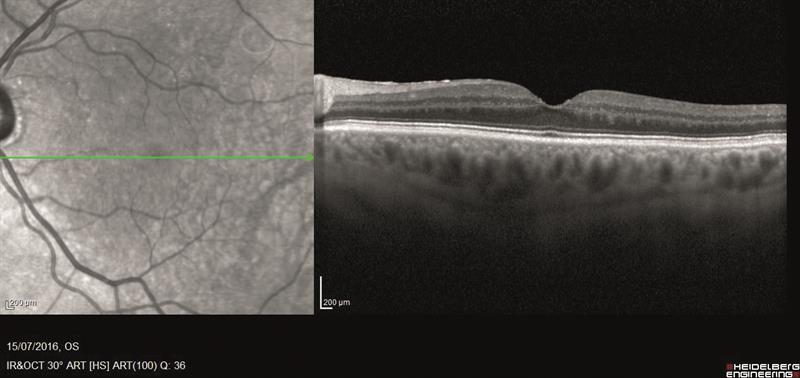
Figure 3
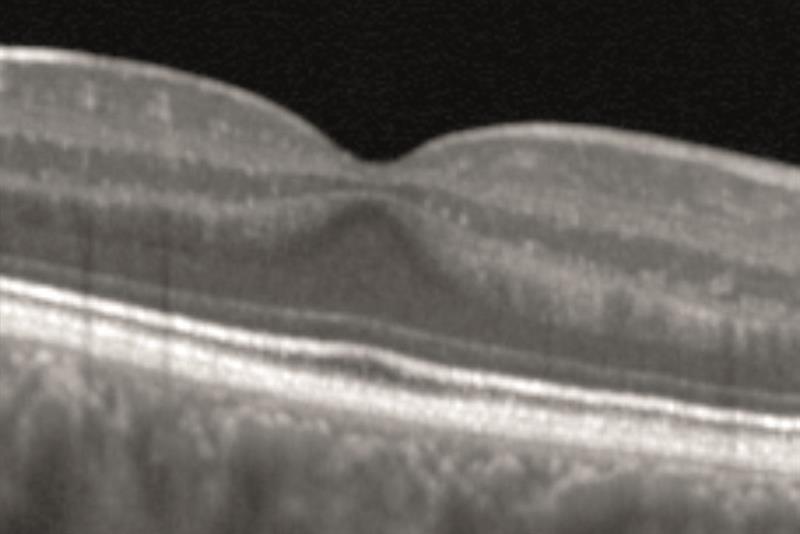
Figure 4
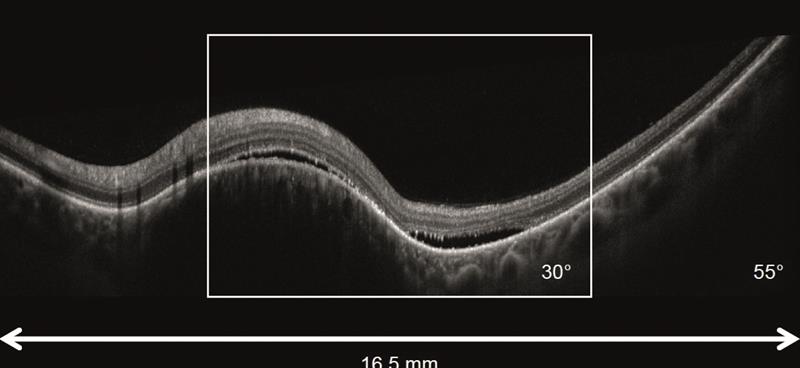
Figure 5
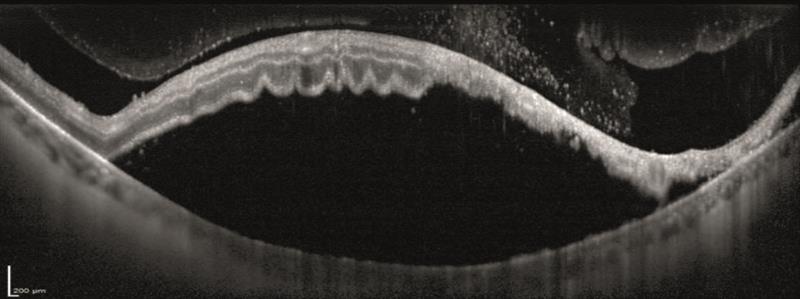
Figure 6

Figure 7
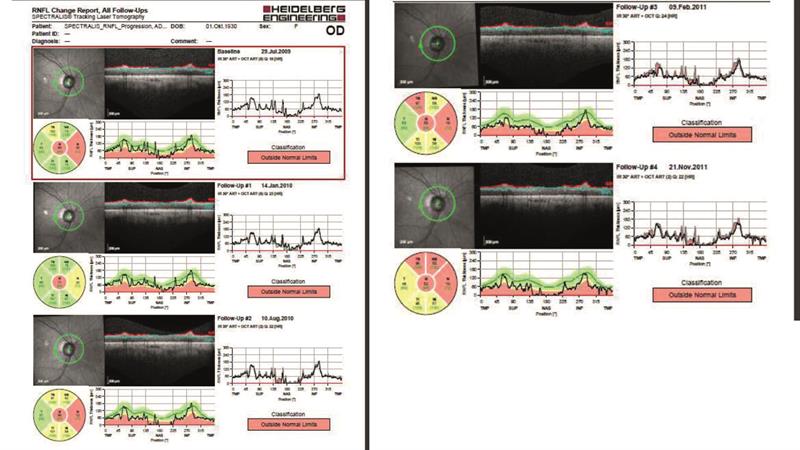
Figure 8
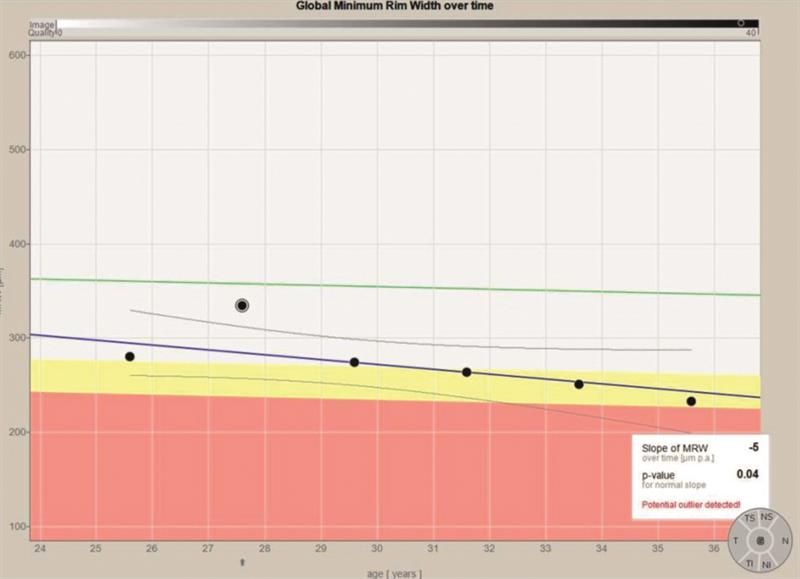
Figure 9
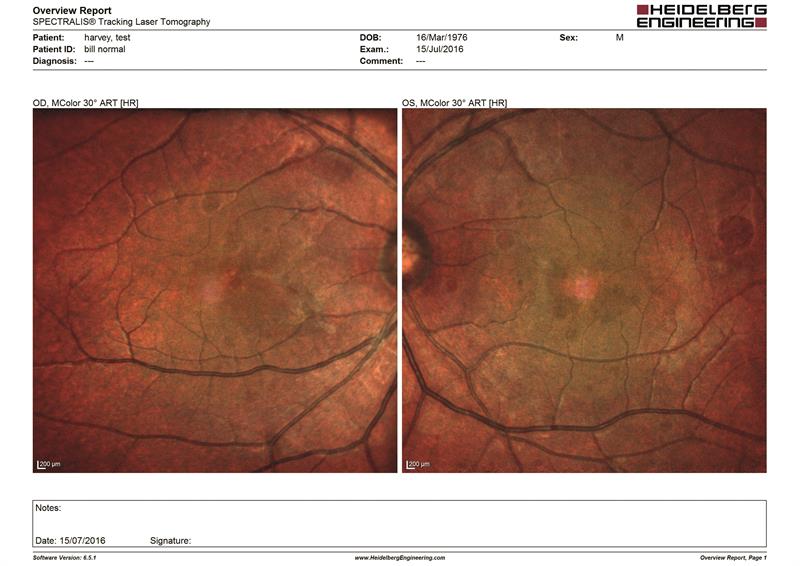
Figure 10

Figure 11
Finally, I have already written with some enthusiasm about the potential of OCT angiography (12) and OCT2 makes the Spectralis ready for the much anticipated launch of the Heidelberg angiography module.
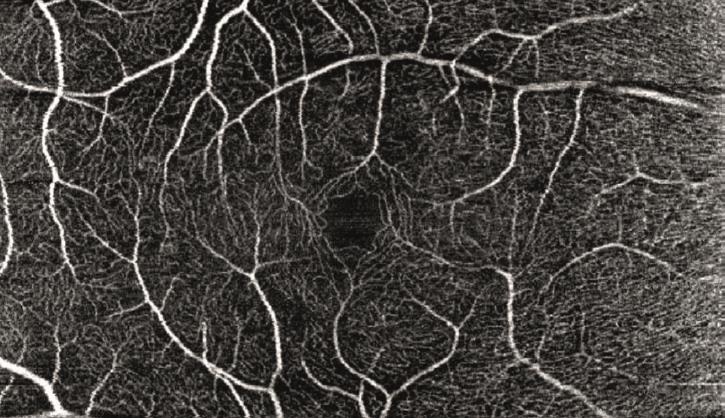
Figure 12
Patient 1
FM is an 83-year-old high hyperope who is starting to notice the impact of his early lens opacification upon his ability to drive, particularly in sunnier conditions. His high contrast acuities are 6/9 both eyes and, significantly, he had been worried by a recent eye examination where he had gained the impression (possibly erroneously) that there was a question over his retinal health that might influence any future decision about lens extraction surgery. With no dilation, OCT assessment was easy and quick. There appeared no concerns regarding ganglion cell complex thickness (13) or retinal thickness and hemisphere symmetry (14). Retinal nerve fibre layer (RNFL) seemed within expected limits (15) as was the neuroretinal rim width (16) which can also be displayed in full radial profile (17). This is just a snapshot of the tests undertaken, but I have included them to illustrate how the machine can very quickly and accurately assess the retina of a challenging patient and so allow some reassurance way beyond what might be available through ophthalmoscopic means.
Click on the image below for a volume scan of the posterior pole of this patient
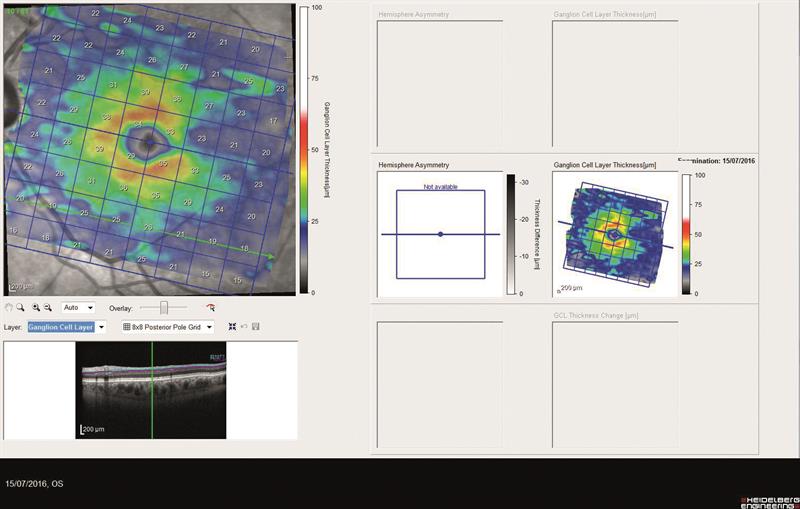
Figure 13
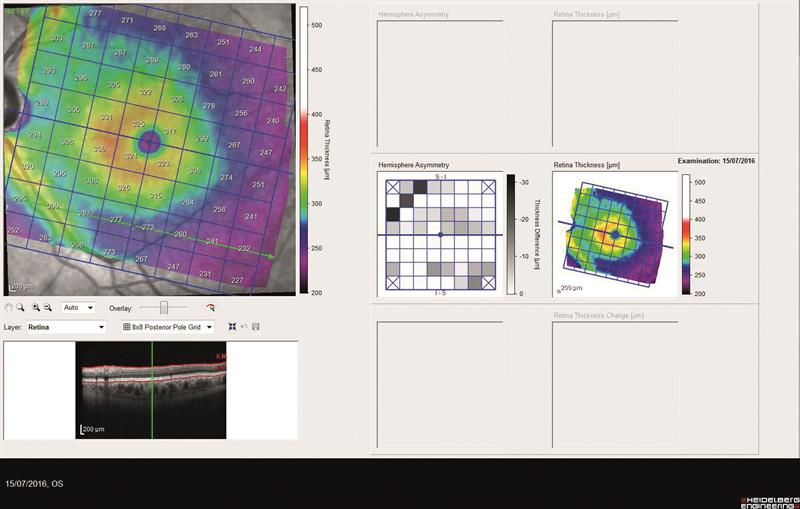
Figure 14
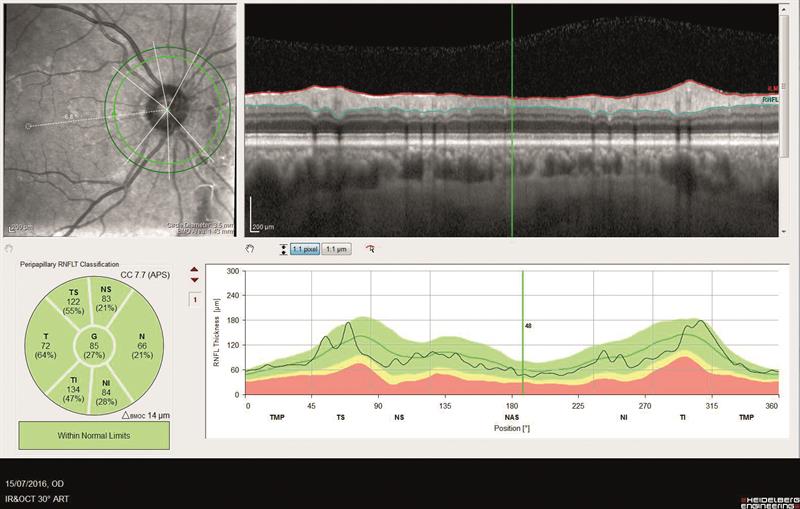
Figure 15
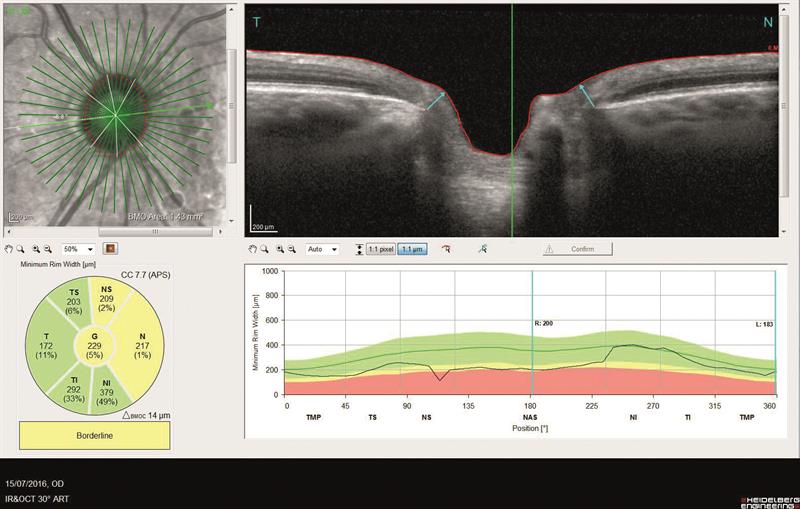
Figure 16
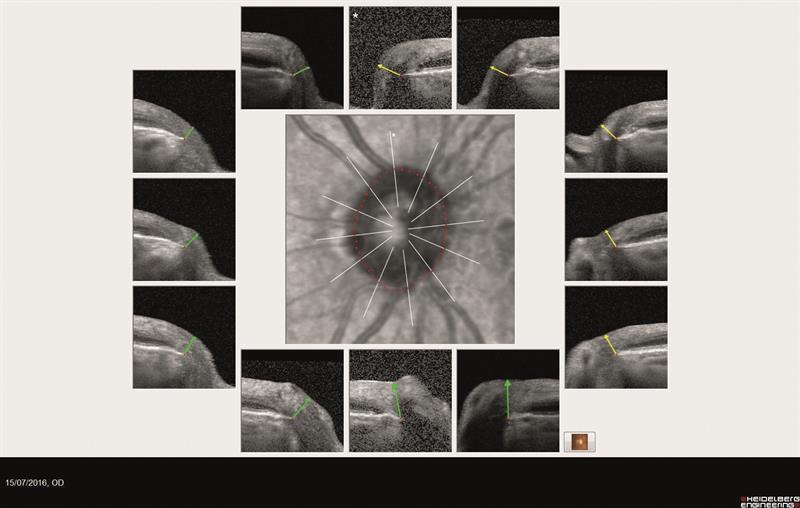
Figure 17
Patient 2
AF is a pigmentary dispersion patient (aged 56) with primary open angle glaucoma diagnosed. Hi fields assessments are less than reliable. The RNFL plot (18) clearly shows neuron loss and the neuroretinal rim widths are below that expected (19, 20). It will be useful to sequentially scan this patient over the coming years to monitor any further progression.
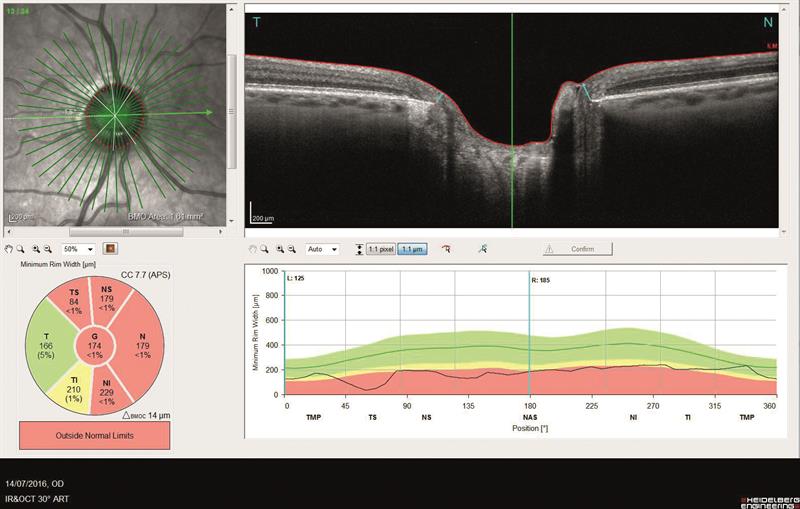
Figure 18
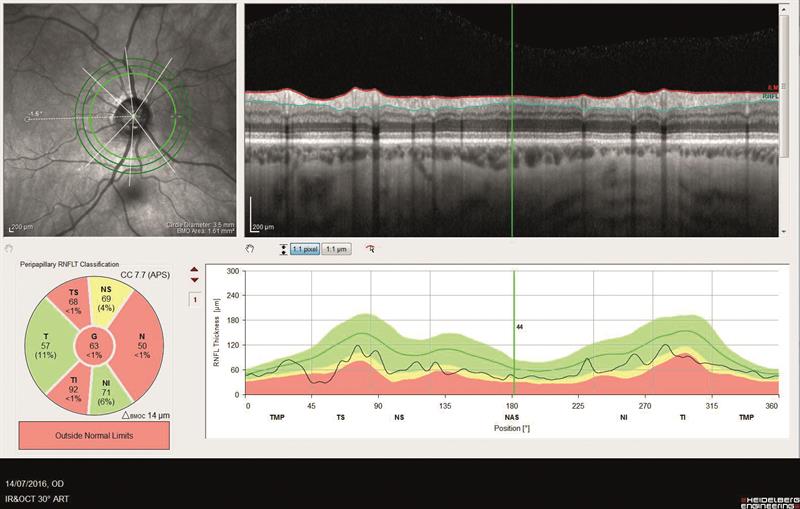
Figure 19
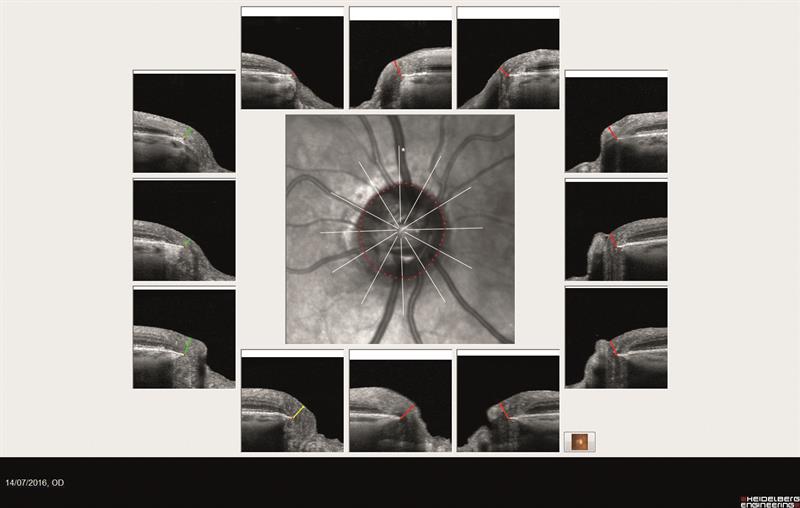
Figure 20
Looking ahead
I can confirm the OCT2 significantly speeds up data gathering, so much so that a challenging 83-year-old did not complain at all. I look forward very much to the roll-out of the angiography package and hope to trial this as soon as it is released.
Further information see heidelbergengineering.co.uk
